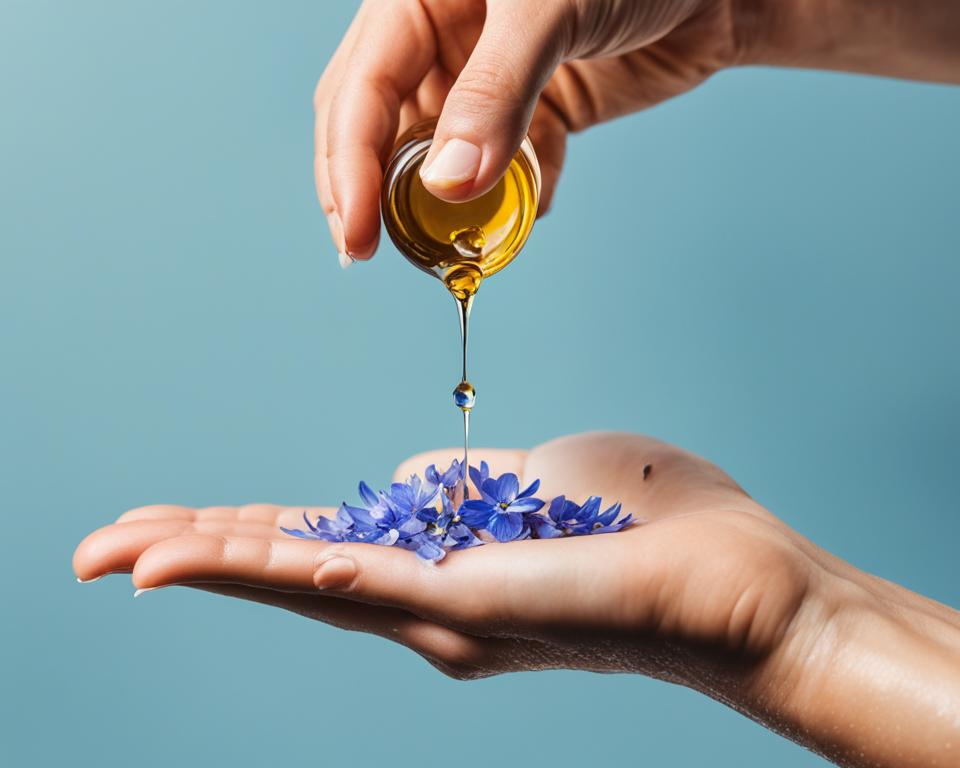Linseed oil is an incredibly versatile oil that has been used for centuries in various areas, from wood preservation to cooking. Its unique properties make it valuable for a wide range of applications. In this section, we will explore some of the diverse uses of linseed oil and its numerous benefits.
Linseed oil is derived from the seeds of the flax plant and is a rich source of alpha-linolenic acid, omega-3 fatty acids, and antioxidants. It has been used for centuries for its various health benefits, including promoting heart health, reducing inflammation, and improving brain function. Linseed oil has a wide range of uses, and its benefits are equally diverse.
Key Takeaways:
- Linseed oil has numerous applications, from wood preservation to cooking.
- Linseed oil is rich in omega-3 fatty acids and antioxidants, making it beneficial for various health conditions.
- Linseed oil is widely used in the painting industry due to its versatility and durability.
- Linseed oil can be used in skincare and hair care products for its moisturizing and nourishing properties.
- Linseed oil is a valuable ingredient in various industrial applications, from lubrication to coatings and sealants.
Wood Preservation
Linseed oil is a popular choice for preserving and treating wood, thanks to its natural properties. When applied to wood, linseed oil penetrates deep into the material, providing protection against moisture and preventing rotting. Additionally, linseed oil enhances the natural beauty of wood, providing a warm, rich finish.
Its effectiveness as a wood preservative has been known for centuries, making it a staple of the woodworking industry. Whether you are treating a new piece of furniture or restoring an antique, linseed oil is a reliable choice for protecting and enhancing the life of your wood.

Painting
Linseed oil is a versatile medium widely used in oil painting. As a binder, it mixes well with pigments and creates oil paint that has a smooth consistency. With its natural drying properties, painters find it easy to work with and can use it to achieve different effects, from transparent washes to thick impastos. When applied to the canvas, it also adds depth and gloss to the colors, making it an essential tool for artists.
One of the major benefits of using linseed oil in art is its ability to increase the flow and transparency of the paint. It also dries to a strong and durable finish, preserving the artwork for years to come. Additionally, linseed oil is an excellent solvent for cleaning paintbrushes, making it a valuable tool in the artistic process.
Many well-known artists, such as Vincent van Gogh, used linseed oil extensively in their paintings. It has become a staple in the world of art due to its natural properties and versatility. If you’re an artist, incorporating linseed oil into your work can help you achieve the desired effects and create a lasting masterpiece.

Nutrition
Linseed oil is a great source of nutrition for those looking to add more omega-3 fatty acids to their diet. These healthy fats are essential for the proper functioning of the body and have been linked to a variety of health benefits.
- Reducing inflammation
- Promoting heart health
- Improving brain function
You can easily incorporate linseed oil into your diet by using it for cooking. It has a nutty flavor that works well in salad dressings, dips, and marinades. You can also add it to smoothies or take it as a supplement in capsule form. Whatever your preference, there are many health benefits to gain from incorporating linseed oil into your diet.

Skin and Hair Care
Linseed oil has been widely used in skin and hair care products because of its numerous benefits. Its moisturizing and nourishing properties make it a popular choice among beauty enthusiasts.
Linseed oil for Skin
Linseed oil is a natural remedy for dry, irritated skin because of its high levels of fatty acids. Its hydrating properties help to maintain skin moisture and prevent dryness. Applying linseed oil to your skin can help soothe irritations, reduce inflammation, and promote a healthy complexion. Moreover, linseed oil for skin can be used to treat various skin conditions such as eczema, psoriasis, and acne. It is an excellent natural choice for achieving beautiful, healthy-looking skin.
Linseed oil for Hair
Linseed oil is also beneficial for hair care because of its nourishing properties. When applied to the hair, it can provide deep hydration, add shine, and reduce frizz. Moreover, it strengthens hair, promotes hair growth, and nourishes the scalp, making it an ideal ingredient for hair care products. Incorporating linseed oil into your hair care routine can help you achieve stronger, healthier hair.

Linseed Oil Benefits for Skin
The consumption of linseed oil can also have benefits for the skin. It is rich in omega-3 fatty acids, which have been shown to help reduce inflammation and improve skin health. Eating foods that contain linseed oil, or taking linseed oil supplements, can be beneficial for maintaining healthy skin as well as providing other overall health benefits.
Industrial Uses
Aside from the fields of wood preservation, painting, and nutrition, linseed oil also has a significant impact on various industries, particularly manufacturing, construction, and automotive.
Linseed oil acts as an excellent lubricant for machinery and aids in the manufacturing of numerous products such as soap, ink, linoleum, and putty. In addition, it is an important ingredient in paint and varnish production, contributing to the hardness and durability of the final product. Furthermore, it is an essential additive in coatings and sealants for its protective and moisture-resistant properties.
With its diverse range of applications, linseed oil has become a staple in the industrial world, offering a natural and effective alternative to synthetic chemicals.

Furniture Restoration
If you’re into antiques, then you know the value of old furniture. But, with time, wooden furniture becomes dull and worn out, losing its charm. That’s when linseed oil comes to the rescue!
Linseed oil is a great option for restoring antique furniture due to its excellent penetrating ability. It seeps into the wood, providing nourishment and protection against moisture. It can also revive the natural luster of the wood, making it look almost new.
To restore an antique piece of furniture using linseed oil, begin by cleaning the surface thoroughly. Next, apply a thin layer of linseed oil using a clean cloth or brush. Allow it to dry for a few hours, and then rub the surface with fine-grit sandpaper to remove any excess oil.
The linseed oil will leave a beautiful, rich finish that will last for many years to come. So, the next time you come across an old piece of furniture that needs restoration, remember, linseed oil can work wonders!




